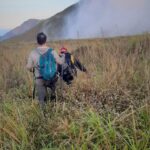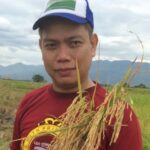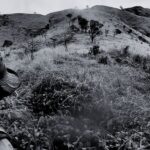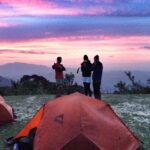What is Bushcraft?
Bushcraft is a set of wilderness survival skills that focus on self-sufficiency in natural environments. It includes skills like shelter building, fire-starting, water sourcing and purification, foraging, tracking, navigation, knot tying, food procurement, tool crafting, wilderness first aid, and camping. Practitioners aim to thrive with minimal equipment using traditional techniques. The following are some of the tools used in "recreational" bushcraft.

How Bushcraft is Contributing to Dwindling Forest Areas and Vanishing Wildlife in the Philippine Wilderness
The Philippine wilderness, known for its unparalleled biodiversity and stunning landscapes, faces a growing threat from an unexpected source: bushcraft. While bushcraft is often celebrated as a means of connecting with nature and honing survival skills, it can be destructive when practiced irresponsibly in delicate ecosystems like those found in the Philippines. In this article, we'll explore the reasons why bushcraft is contributing to dwindling forest areas and vanishing wildlife in the Philippine wilderness.
1. Cutting Down or Damaging Trees
Irresponsible bushcraft often involves clearing land for makeshift campsites, which can lead to deforestation. Trees are cut down or damaged to create space, and the delicate balance of the forest ecosystem is disrupted.
Solution: Choose established campsites or areas designated for camping to minimize the impact on forested areas. Avoid cutting down trees or disturbing vegetation unnecessarily.
2. Failure to Control Fires
Campfires are a common feature of bushcraft, but they can quickly get out of control if not managed properly. Unattended fires can lead to forest fires that devastate large forested areas.
Solution: Follow strict fire safety guidelines, use designated fire rings or stoves, and ensure fires are thoroughly extinguished before leaving the campsite.
3. Soil Erosion
The rugged terrain of the Philippines is highly susceptible to soil erosion. Irresponsible bushcraft activities, such as digging trenches for shelter, can accelerate soil erosion, leading to landslides and the loss of valuable topsoil.
Solution: Choose campsite locations carefully, avoid disturbing the soil and vegetation, and practice proper campsite rehabilitation techniques to mitigate soil erosion.
4. Destroying Wildlife Habitats
Many species of wildlife in the Philippine wilderness are already endangered due to habitat loss. Irresponsible bushcraft activities, such as clearing land and disturbing the natural environment, can further displace or harm these animals.
Solution: Respect protected areas and consider the 12 Outdoor Habits to minimize habitat destruction. Avoid encroaching on areas known for their biodiversity..
5. Overharvesting Resources
Bushcraft often involves foraging for food and materials in the wild. Overharvesting of plants, hunting animals excessively, or removing essential resources from the ecosystem can threaten the survival of wildlife.
Solution: Learn about local regulations and guidelines for foraging and hunting. Prioritize sustainable practices and avoid overharvesting.

6. Noise and Disturbance
Noise from motorized vehicles, loud camp activities, and other disturbances associated with bushcraft can disrupt the natural behaviors and breeding patterns of wildlife.
Solution: Practice responsible camping by keeping noise levels to a minimum, especially during dawn and dusk when wildlife is most active.
While traditional bushcraft being practiced by indigenous people is essential for their daily lives, recreational bushcraft should be approached with great care and consideration. The threats of dwindling forest areas, vanishing wildlife, the influx of more humans into remote areas, and rapid urbanization are very real, and our actions in these delicate ecosystems can either exacerbate or alleviate these challenges.
PRIORITIZE CONSERVATION OVER RECREATIONAL BUSHCRAFT
Bushcraft is inherently disruptive to fragile ecosystems. Consider alternative ways to connect with nature and develop outdoor skills that prioritize conservation and environmental stewardship. Support local conservation initiatives, respect protected areas, and raise awareness about the importance of preserving the Philippine wilderness.








